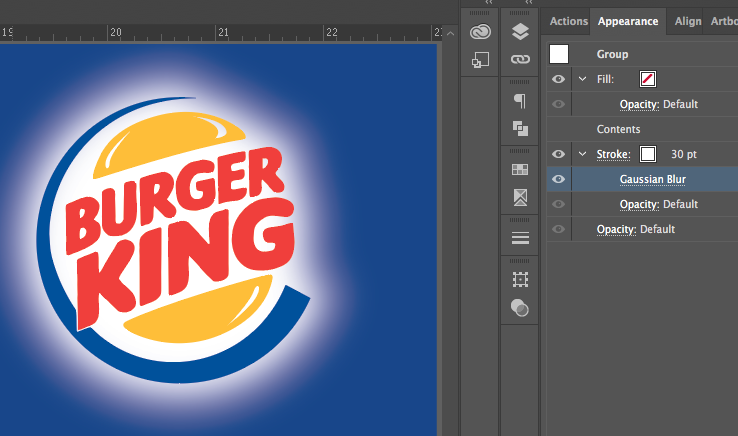- Home
- Illustrator
- Discussions
- Re: ELI5 Why Drop Shadows look so different Illust...
- Re: ELI5 Why Drop Shadows look so different Illust...
Copy link to clipboard
Copied
Not complaining -- just wondering why they look so different? They seem much, much harder to control in Illustrator as well -- nowhere near as ... precise, I guess, when I play with the controls. I never get them exactly how I want them in Illustrator but, in Photoshop, they are a pure joy. If there are any tips and tricks or something I should know to master them in Illustrator, please pass them along.
 1 Correct answer
1 Correct answer
Well, my position on this might prove unpopular, but to put it bluntly, drop shadows don't belong in Illustrator.
Generally speaking, I'd contend that raster-based effects (and/or vector-editor trickery that should be raster based for best results), are consumer-level-market-driven add-ons to vector editing applications. I don't really have any sort of inside information about this, but I do seem to recall the introduction of drop shadow effects in Illustrator, and I remember that CorelDRAW! had
...Explore related tutorials & articles
Copy link to clipboard
Copied
well, the interface is nicer in photoshop, and there are a few more options too. but that's just how it is. what do you mean specifically when you say 'much harder to control'?
Copy link to clipboard
Copied
Illustrator is a vector based program with bitmapped effects added on and Photoshop is bitmapped based so they have to code each from scratch. Much of the math behind that alogorith is the same so the results can be quite close.
Illustrator is lacking more settings. For a similar feature of outer/inner glows especially I prefer to make a stroke In Illustrator, increase thickness and blur. This give me to better control the speed of the falloff and allows me to create results similar to photoshop.
Copy link to clipboard
Copied
Add a stroke to a group of vector paths and you get a stroke on every path (notice highlights on buns). Drag the stroke under contents,

and with some effects you can make this into a shadow

ora nice outer glow.

Copy link to clipboard
Copied
Whoa ... what be this "Contents" witchcraft? I have some googling to do.
Copy link to clipboard
Copied
Well, my position on this might prove unpopular, but to put it bluntly, drop shadows don't belong in Illustrator.
Generally speaking, I'd contend that raster-based effects (and/or vector-editor trickery that should be raster based for best results), are consumer-level-market-driven add-ons to vector editing applications. I don't really have any sort of inside information about this, but I do seem to recall the introduction of drop shadow effects in Illustrator, and I remember that CorelDRAW! had the feature first, a few years prior. Considering that, it's reasonable to characterize the addition to Illustrator as a competitive maneuver (as opposed to anything resembling a 'good idea').
Perhaps my line of thinking is out of fashion, especially among users who would habitually complain about having to move among several applications to achieve their objectives, but actually, your post kind of justifies it. If good-looking, well-controlled drop shadow effects are needed in your output, your output (at least the shadows) should be created or applied in a raster-editing environment. All my work in Illustrator, Photoshop, and InDesign is strictly segregated this way according to the nature of its constructs, using the application originally designed to facilitate those constructs, and it doesn't limit me in any way. All the cross-functionality (often wrongly perceived as 'integration') that has come about among these applications as they've evolved is only bloat that was never actually needed, in my opinion.
Copy link to clipboard
Copied
I am totally with you on separation of tasks. If I were creating these graphics from scratch, I'd do this all in Photoshop but for multiple reasons, I'm either now creating new vector graphics or editing existing vector graphics. They go through many iterations and tests in their final home so, while waiting until they're finished to add the drop shadow in Photoshop would normally be a fine solution, I need a drop shadow for every little version and comp.
Find more inspiration, events, and resources on the new Adobe Community
Explore Now
